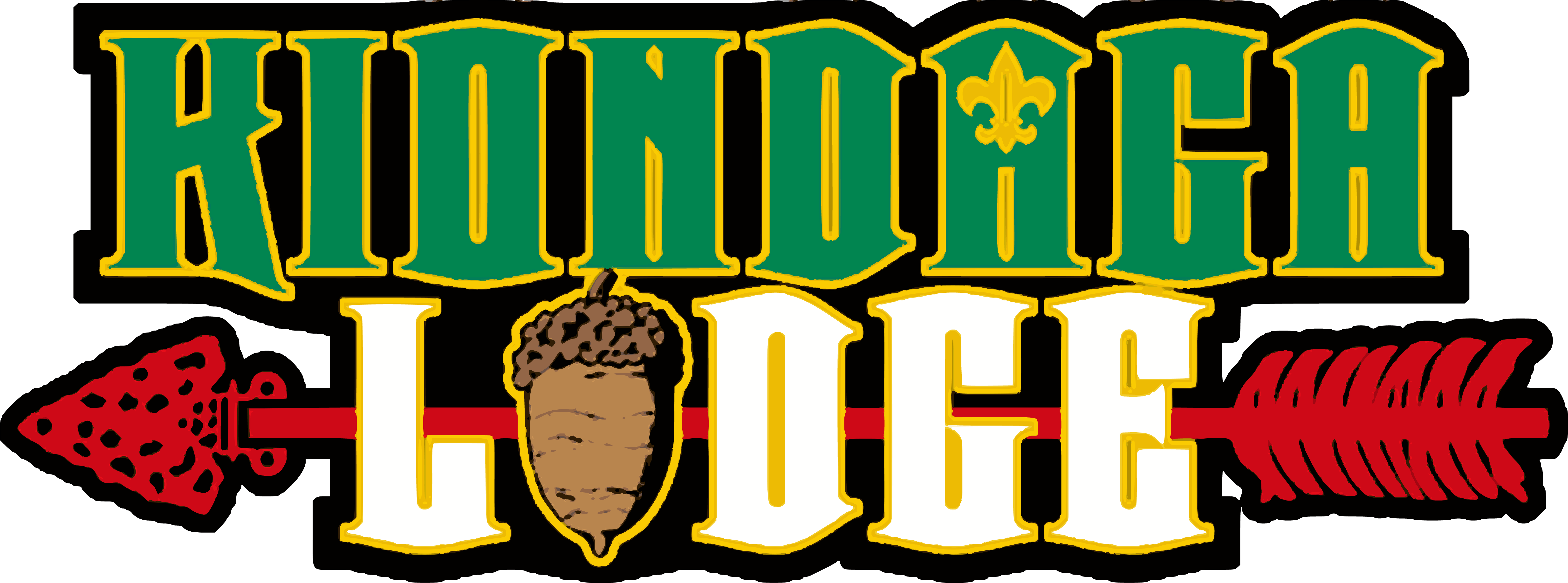History of the OA
For more than 100 years, the Order of the Arrow (OA) has recognized Scouts and Scouters who best exemplify the Scout Oath and Law in their daily lives. This recognition provides encouragement for others to live these ideals as well. Arrowmen are known for maintaining camping traditions and spirit, promoting year-round and long term resident camping, and providing cheerful service to others. OA service, activities, adventures, and training for youth and adults are models of quality leadership development and programming that enrich and help to extend Scouting to America’s youth.
Founded in 1915 at Treasure Island Scout Camp
In 1915, Camp Director E. Urner Goodman and Assistant Camp Director Carroll A. Edson searched for a way to recognize select campers for their cheerful sprits of service at Treasure Island Scout Camp in the Delaware River. Goodman and Edson founded the Order of the Arrow when they held the first Ordeal Ceremony on July 16th of that year. By 1921, as the popularity of the organization spread to other camps, local lodges attended the first national gathering called a Grand Lodge Meeting.
Officially Integrated into the Boy Scout Program in 1948
The Order of the Arrow was one of many camp honor societies that existed at local Scout camps across the country. As the years went on and more camps adopted the Order of the Arrow’s program, it gained prominence and became part of the national Boy Scout program in 1934. By 1948, the OA, recognized as the BSA’s national brotherhood of honor campers, became an official part of the Boy Scouts of America. Toward the end of the twentieth century, the OA expanded its focus to include conservation, high adventure, and servant-leadership.
The Lodge Becomes an Integral Part of the Council
In 1998 the Order of the Arrow created its first strategic plan. This document outlined ways that the OA could help the Boy Scouts of America accomplish their goals and strengthen the local program. One of the plan’s initiatives called for every lodge to become an integral part of its council’s operations. For many lodges, this was the first time a communication link had been established between the lodge leadership and the council Scout executive. It was also at this point that the Order of the Arrow officially became “Scouting’s National Honor Society.”
Throughout the years, the Order of the Arrow has played an integral role in the program of the Boy Scouts and in the community service its members contribute to their communities. To date, more than one million people have been members of the Order of the Arrow.
Presently, the Order of the Arrow consists of nearly 300 lodges, which form approximately 48 sections in the 4 geographical regions. Leadership positions and voting rights are restricted to members under the age of 21. Through the program, members live up to the ideals of brotherhood, cheerfulness, and service set forth by founders E. Urner Goodman and Carroll A. Edson.
From oa-bsa.org.
History of Kiondaga Lodge
Kiondaga Lodge, Buffalo Trace Council, came into existence with its first charter approval on September 8, 1949. The person responsible for establishing the Order of the Arrow in this area was R. E. Gregg, the council executive at the time. Prioir to 1949, the Firecrafter organization had been the principal recognition of honorary campers in the council. With the emergence of the OA lodge, active Firecrafter members automatically became Arrowmen.
For the first few months, the lodge had no name and was referred to as the “Acorn Lodge” until a Native American name could be decided upon, following suite with previously founded lodges. It is believed that a Piankeshaw word, Kiondaga, translates to “white oak” and was selected as an appropriate name for the lodge because of the numerous white oak treees in the area and because several Piankeshaw tribes inhabited the region. The white oak in combination with the acorn makes up the lodge totem.
The first meeting of the lodge was held November 25, 1949, at the Community Center of Evansville, Indiana, with thirty-eight members present. The meeting focused upon constructing a new constitution, selecting a ritual team, and choosing an emblem and name. Early members of the lodge who were present included: Don Dannheiser (lodge Chief), Jerry MacGreger, James D. Miller, Richard Emge, Don Thompsone, Stanley Williams, Joe O’rear, George Hutchlings, and Lensing Kirchgessner. Malcom Brady was named the first official Lodge Adviser.

On March 28, 1995, the Illinois counties of Richland, Lawrence, Wabash, and Edwards became part of the Southern Indiana Council. The newly formed council adopted the name Buffalo Trace, the previous name of the 12 county council in Eastern Illinois. The name was selected because of the historical Buffalo Trace, which existed across the northern part of the council and figured prominently as an important east-west road in the days of pioneers and was the boundary line of an early Native American treaty. As a result of the council merger, eighty- two Order of the Arrow members of the Woapink Lodge in the four Illinois counties became members of Kiondaga. Among these members who transferred were former Area 7-C Vice Chief, Bob Taylor, and fomer Area 7-C Advisor, Ray Van Delist, both of Olney.
Kiondaga Lodge members were involved with aspects of planning, designing, and building set for the 1963, 1965, and 1967 National Order of the Arrow Conferences.
